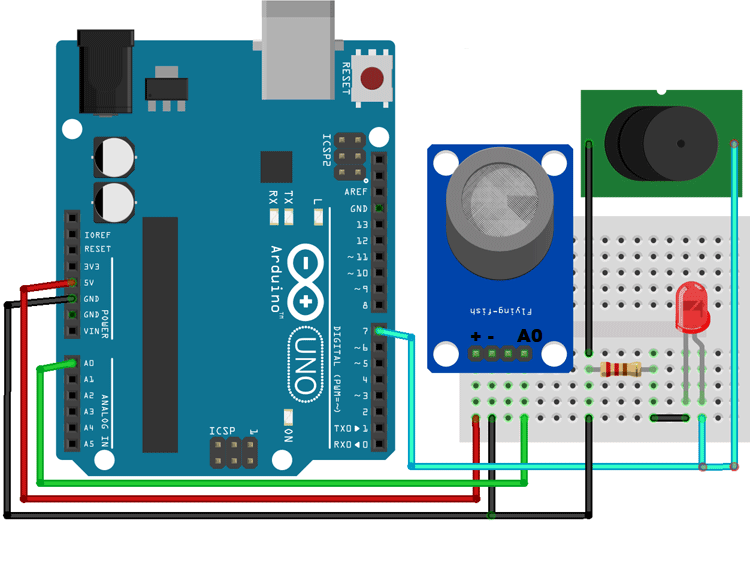Project Description:
- This is a gas leak indicator project, designed to detect the presence of natural gas around people and household areas. The problem is that people in households often cannot detect LPG cylinder leaks, which can lead to fatal injuries.
- In industrial areas, the leakage of natural gases like methane, propane, and butane can cause many accidents and deaths. The solution involves preventing such accidents by using a gas-detecting device.
- This can be built using components such as an Arduino, MQ-5 gas sensor, buzzer, and LED to alert nearby people. In the future, the project can be upgraded by incorporating different types of sensors to detect a wide range of gases. Additionally, IoT can be used for remote monitoring, and regular inspections and check-ups can be performed to help prevent such incidents.
Components Required:
- Arduino UNO with cable x 1
- MQ-5 Gas Sensor x 1
- Buzzer x 1
- LED x 1
- breadboard small x 1
- resistor 220 ohm x 1
Benefits:
- Safety: Immediate detection and alert help prevent accidents and ensure timely evacuation or corrective action.
- Reliability: Continuous monitoring ensures that gas leaks are detected as soon as they occur.
- Ease of Use: Simple and effective alert mechanisms (buzzer and LED) make it easy for users to recognize a gas leak.
Connections:
Connection of Arduino with MQ-5:
- Arduino pin 5v to VCC
- Arduino pin GND to GND
- Arduino pin A0 to A0
Connection of Arduino to the buzzer
- Arduino pin 7 to VCC
- Arduino pin GND to GND
- Connect the GND of the buzzer to GND of the LED through the resistor
Connection of Arduino to LED
- Arduino pin 7 to VCC
- Arduino pin GND to GND
Circuit diagram:

Code:
#define ledPin 7
#define sensorPin A0
int sensorValue = analogRead(sensorPin);
int outputValue = map(sensorValue, 0, 1023, 0, 255);
void setup() {
Serial.begin(9600);
pinMode(ledPin, OUTPUT);
digitalWrite(ledPin, LOW);
}
void loop() {
Serial.print("Analog output: ");
if (outputValue > 65)
analogWrite(ledPin, outputValue);
else
digitalWrite(ledPin, LOW);
return outputValue;
delay(500);
}











